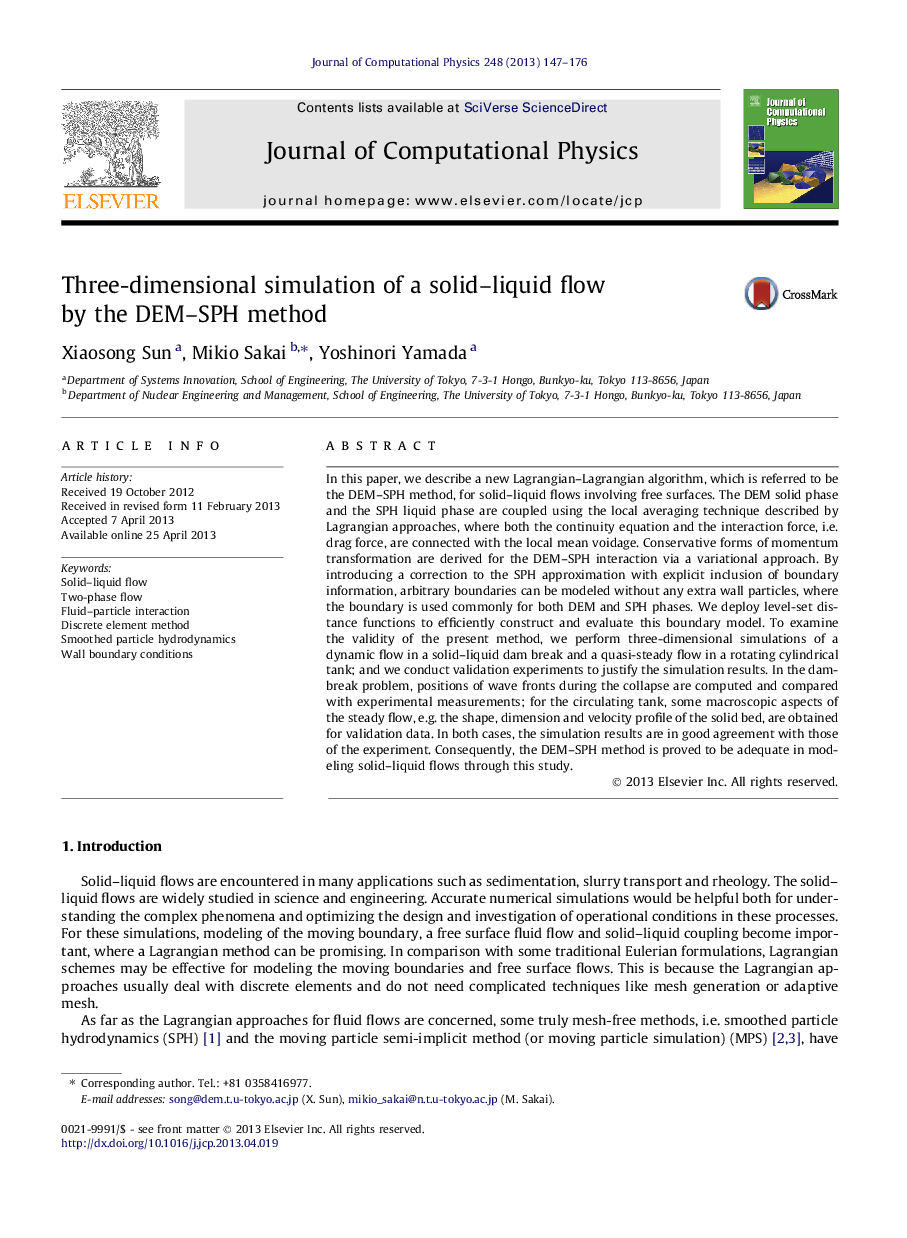| Article ID | Journal | Published Year | Pages | File Type |
|---|---|---|---|---|
| 519355 | Journal of Computational Physics | 2013 | 30 Pages |
•We develop a new Lagrangian model for solid–liquid flows involving free surfaces.•The present model employs conservative forms and a compatible boundary model.•We analyze the dynamic wave propagation in a solid–liquid dam-break flow.•We simulate the quasi-steady solid–liquid flow in a rotating tank.•Simulation results are in good agreement with experimental data for validation.
In this paper, we describe a new Lagrangian–Lagrangian algorithm, which is referred to be the DEM–SPH method, for solid–liquid flows involving free surfaces. The DEM solid phase and the SPH liquid phase are coupled using the local averaging technique described by Lagrangian approaches, where both the continuity equation and the interaction force, i.e. drag force, are connected with the local mean voidage. Conservative forms of momentum transformation are derived for the DEM–SPH interaction via a variational approach. By introducing a correction to the SPH approximation with explicit inclusion of boundary information, arbitrary boundaries can be modeled without any extra wall particles, where the boundary is used commonly for both DEM and SPH phases. We deploy level-set distance functions to efficiently construct and evaluate this boundary model. To examine the validity of the present method, we perform three-dimensional simulations of a dynamic flow in a solid–liquid dam break and a quasi-steady flow in a rotating cylindrical tank; and we conduct validation experiments to justify the simulation results. In the dam-break problem, positions of wave fronts during the collapse are computed and compared with experimental measurements; for the circulating tank, some macroscopic aspects of the steady flow, e.g. the shape, dimension and velocity profile of the solid bed, are obtained for validation data. In both cases, the simulation results are in good agreement with those of the experiment. Consequently, the DEM–SPH method is proved to be adequate in modeling solid–liquid flows through this study.
